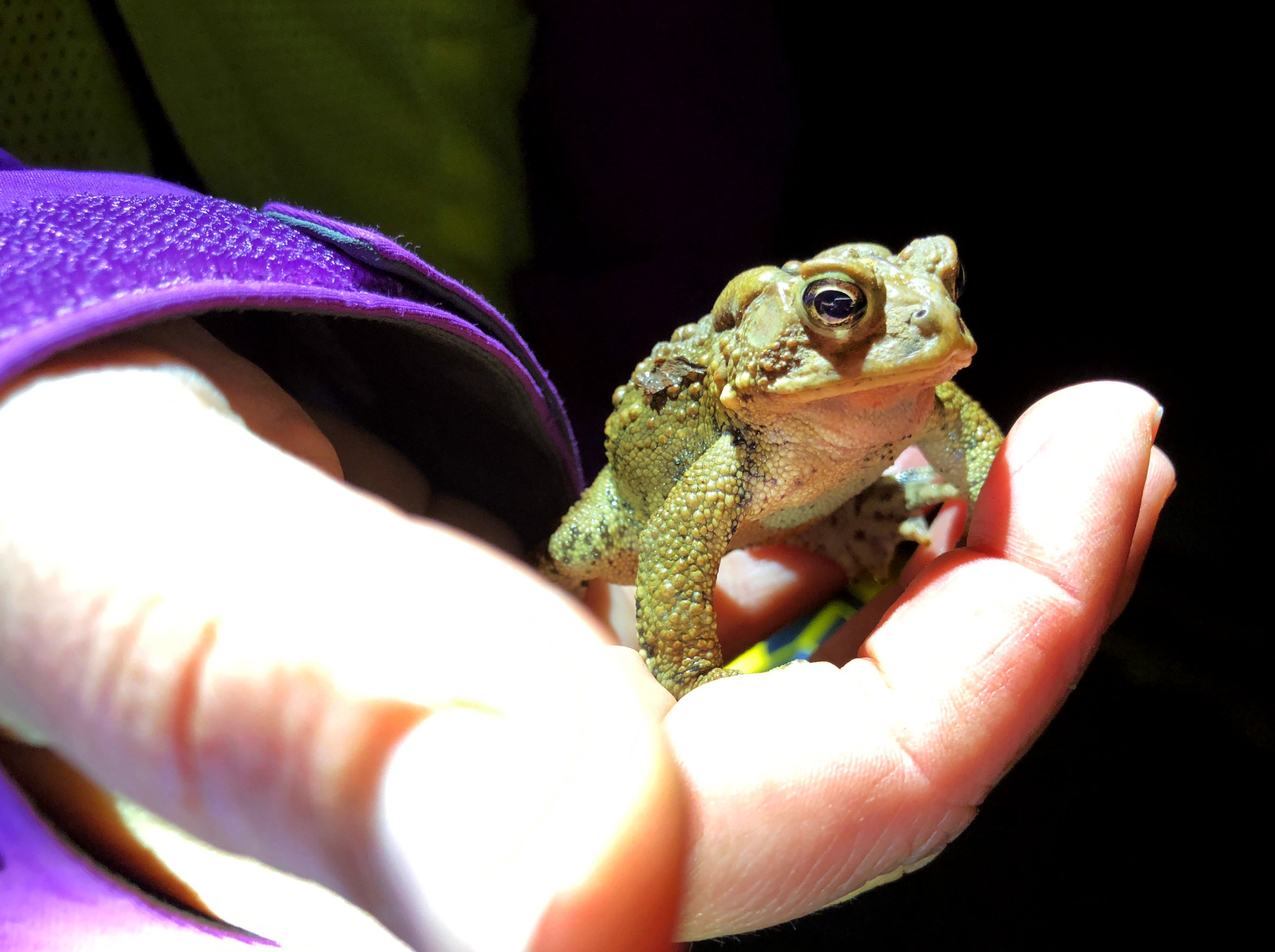Amphibian Road-Mortality
A conservation problem you can help with
Spotted Salamander crossing a road (photo by Brett Thelen)
Every Spring in the Northeast many of hundreds of thousands of amphibians make their annual migrations down to wetlands to breed and lay their eggs in. Then, over the next several weeks, most return to the surrounding woodlands to spend the rest of the year in. Individuals commonly travel hundreds of meters to reach their breeding wetland, often times encountering roadways during these migrations.
American Toad carried safely across the road (photo by Anna Miller)
Due to the combination of high road densities in the Northeast, relatively slow crossing speed of amphibians relative to vehicular traffic rates, and behaviors often exhibited needing to cross roads during these movements. Because of
Due to the combination of high road densities in the Northeast, relatively slow crossing speed of amphibians relative to vehicular traffic rates, and behaviors often exhibited needing to cross roads during these movements. Because of
Due to the combination of high road densities in the Northeast, relatively slow crossing speed of amphibians relative to vehicular traffic rates, and behaviors often exhibited needing to cross roads during these movements. Because of
Temporary road closure for amphibian crossings in Keene, NH (photo by Brett Thelen)
Reduce/eliminate your driving on warm, wet Spring nights (and encourage others you know to do the same).
Consider joining an existing, or starting a new, amphibian road-crossing brigade near you (make sure to read and follow safety precautions and other guideline linked in the “Learn More” section below).
If you do drive during a warm, wet Spring night, try to stay off of rural/back-roads as much as possible as these tend to be ones with the most amphibians on them.
What You Can Do
Wood Frogs mating (photo by Nicole Freidenfelds)
Safety tips for helping amphibians cross roads: Safety tips for amphibian crossings
Related videos and training materials for amphibian crossing brigades: Amphibian crossings



